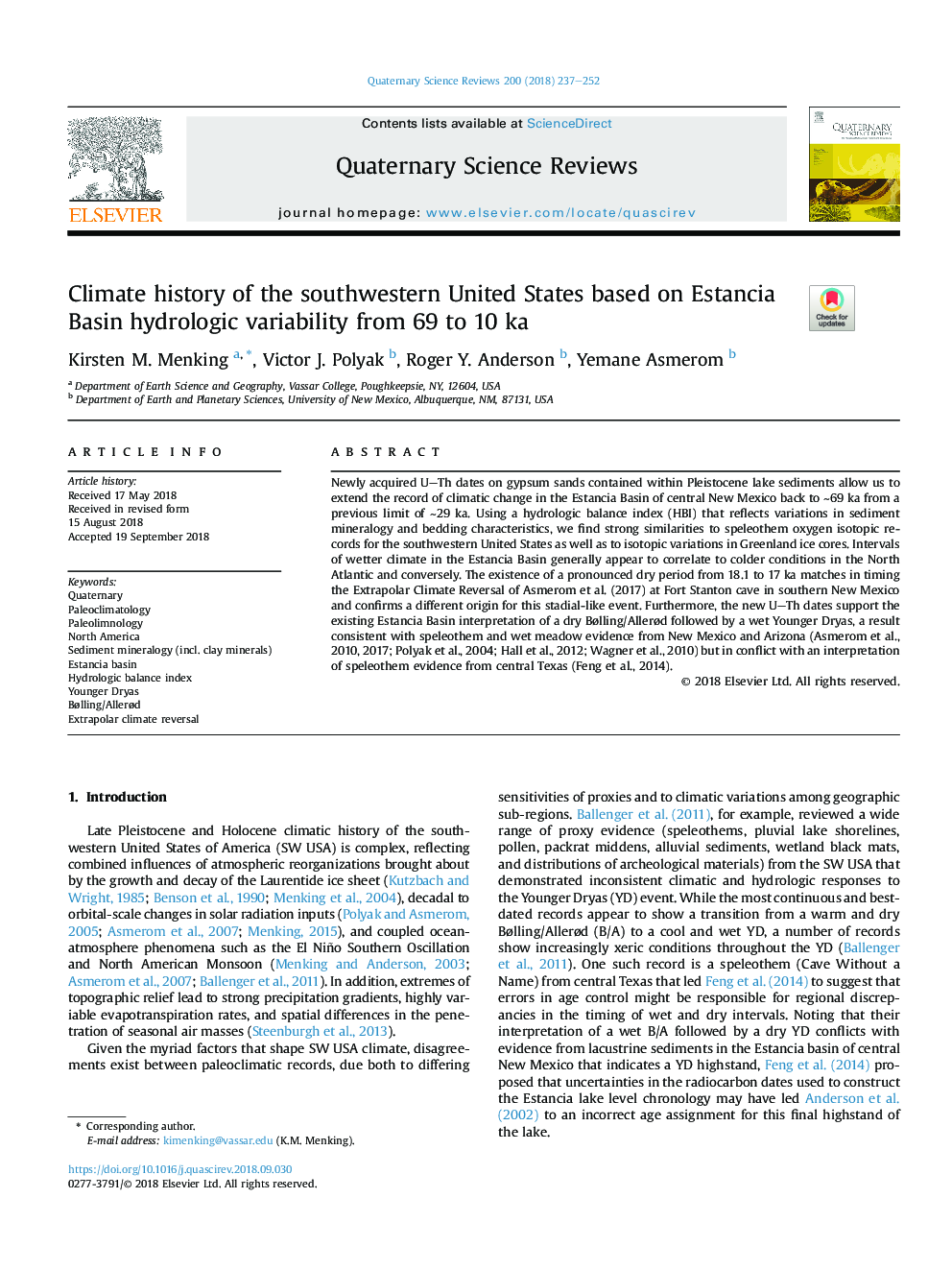| Article ID | Journal | Published Year | Pages | File Type |
|---|---|---|---|---|
| 11010082 | Quaternary Science Reviews | 2018 | 16 Pages |
Abstract
Newly acquired UTh dates on gypsum sands contained within Pleistocene lake sediments allow us to extend the record of climatic change in the Estancia Basin of central New Mexico back to â¼69 ka from a previous limit of â¼29 ka. Using a hydrologic balance index (HBI) that reflects variations in sediment mineralogy and bedding characteristics, we find strong similarities to speleothem oxygen isotopic records for the southwestern United States as well as to isotopic variations in Greenland ice cores. Intervals of wetter climate in the Estancia Basin generally appear to correlate to colder conditions in the North Atlantic and conversely. The existence of a pronounced dry period from 18.1 to 17 ka matches in timing the Extrapolar Climate Reversal of Asmerom et al. (2017) at Fort Stanton cave in southern New Mexico and confirms a different origin for this stadial-like event. Furthermore, the new UTh dates support the existing Estancia Basin interpretation of a dry Bølling/Allerød followed by a wet Younger Dryas, a result consistent with speleothem and wet meadow evidence from New Mexico and Arizona (Asmerom et al., 2010, 2017; Polyak et al., 2004; Hall et al., 2012; Wagner et al., 2010) but in conflict with an interpretation of speleothem evidence from central Texas (Feng et al., 2014).
Related Topics
Physical Sciences and Engineering
Earth and Planetary Sciences
Geology
Authors
Kirsten M. Menking, Victor J. Polyak, Roger Y. Anderson, Yemane Asmerom,
